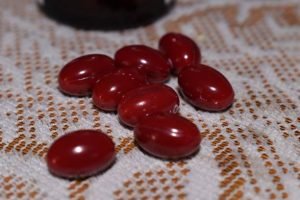Dietary iron is an essential mineral that plays a crucial role in the body. It is necessary for the production of hemoglobin, a protein in red blood cells that carries oxygen from the lungs to the rest of the body. Iron is also involved in energy production, immune function, and cognitive development.
Sources of Iron:
- 1. Heme Iron: Heme iron is found in animal-based foods, such as red meat, poultry, and seafood. It is more easily absorbed by the body compared to non-heme iron. Heme iron sources include beef, pork, lamb, and organ meats like liver. Poultry, such as chicken and turkey, also contain heme iron. Seafood, especially shellfish like clams, mussels, and oysters, are good sources of heme iron.
- 2. Non-Heme Iron: Non-heme iron is found in plant-based foods, such as beans, lentils, spinach, and fortified cereals. Non-heme iron sources include legumes like beans, lentils, and chickpeas, as well as leafy green vegetables like spinach and kale. Fortified cereals, whole grains, and nuts also provide non-heme iron.
Deficiency of Iron:
Iron deficiency is a common nutritional deficiency worldwide, especially among women and children. It can occur due to inadequate dietary intake, poor absorption, or increased iron requirements. Symptoms of iron deficiency include fatigue, weakness, pale skin, shortness of breath, and impaired cognitive function. Iron deficiency anemia occurs when the body does not have enough iron to produce adequate amounts of hemoglobin.

Recommended Intakes:
The recommended daily intake of iron varies depending on age, sex, and life stage. For adult men and postmenopausal women, the recommended intake is 8 milligrams (mg) per day. For premenopausal women, the recommended intake is 18 mg per day due to menstrual blood loss. Pregnant women have higher iron needs, with a recommended intake of 27 mg per day.
Risks from Excessive Iron Intake:
Excessive iron intake can also be harmful. Iron overload can occur in individuals with a genetic condition called hemochromatosis or in those who receive frequent blood transfusions. High levels of iron can lead to organ damage, particularly in the liver, heart, and pancreas. It is important to consult with a healthcare professional before taking iron supplements, as they can increase the risk of iron overload if not used appropriately.
To enhance iron absorption, it is recommended to consume iron-rich foods along with foods high in vitamin C, such as citrus fruits, strawberries, and bell peppers. Vitamin C helps convert non-heme iron into a more absorbable form. On the other hand, certain substances, such as tannins in tea and phytates in whole grains and legumes, can inhibit iron absorption. Therefore, it is advisable to consume these foods separately from iron-rich sources or to include vitamin C-rich foods in the same meal.
In conclusion, dietary iron is an essential mineral that is necessary for various bodily functions. It can be obtained from both animal-based and plant-based sources. Iron deficiency is a common nutritional deficiency, and symptoms include fatigue, weakness, and anemia. Adequate intake of iron-rich foods, along with vitamin C-rich foods, can enhance iron absorption. However, excessive iron intake can be harmful and should be avoided. It is important to consult with a healthcare professional for proper diagnosis and treatment of iron deficiency.

